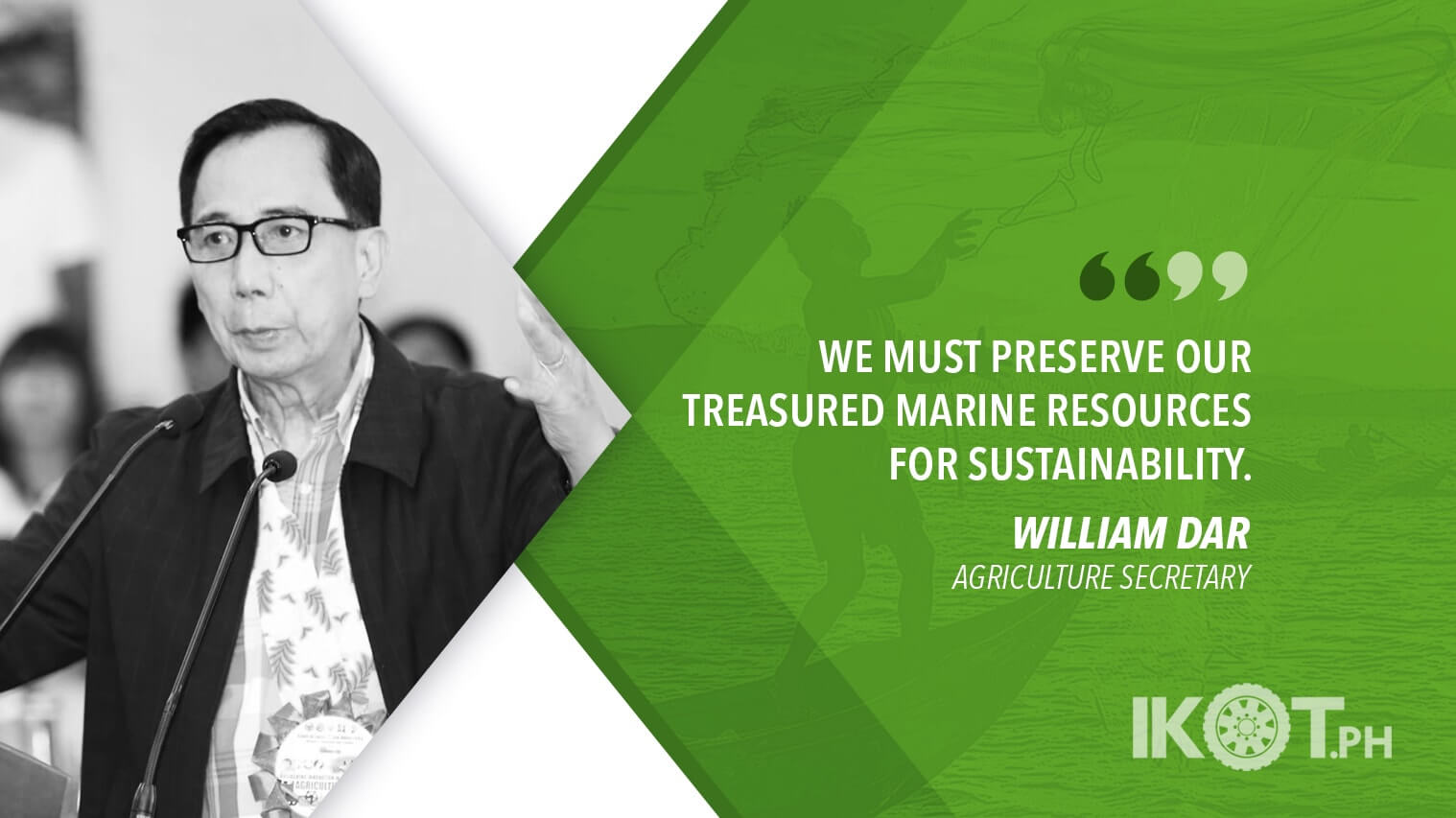Agriculture Secretary William Dar underscored the need for stronger measures on the conservation and management of the fisheries sector.
“Now that the Department of Agriculture is more emphatic on fully implementing laws and making fisheries management more efficient and effective, we recognize the need to strengthen enforcement agencies and equip their people with the necessary skills to effectively implement the law,” Dar said in his speech during the Fisheries Summit at the SMX Convention Center in Pasay City.
One of the measures is the continuous implementation of the “closed fishing season” to give time for fish species such as sardine, herring, and mackerel to spawn and increase their population.
“We must preserve our treasured marine resources for sustainability as they impact on waters outside the EEZ (exclusive economic zone) such as the Coral Triangle,” the agriculture chief said.
“There is a need to strengthen marine park management systems by adopting smart technologies.”
The agriculture head also stressed the need to strengthen marine park management systems by adopting “smart technologies” and work closely with local governments, civil society, academe, fisherfolk, and people’s organizations — in partnership with the Department of Environment and Natural Resources (DENR)-Biodiversity Management Bureau (BMB).
“An even more urgent concern is the immediate mapping and planning for developing and managing the Philippine Rise, particularly the shallowest portion called the ‘Benham Bank’, which is almost 100 percent covered with corals — in tandem with the DENR-NAMRIA (National Mapping and Resource Information Authority), Philippine Navy, the Philippine Coast Guard, and the UP (University of the Philippines) Marine Science Institute,” he noted.
Dar also proposed for a bigger budget for the establishment of more fisheries management areas.
To date, some 263 fishing grounds have been declared fisheries management areas to address overfishing, illegal fishing, habitat destruction, pollution and climate change through science-based conservation and participatory management.
Meanwhile, Agriculture Undersecretary and Bureau of Fisheries and Aquatic Resources (BFAR) director Eduardo Gongona said the Fisheries Summit with the theme “Masaganang Ani at Mataas na Kita sa Industriya ng Pangisdaan,” is part of the government’s efforts to sustain the positive gains achieved by the fisheries sector in terms of production in the past year.
“We are 92 percent sufficient in fisheries.”
“We are 92 percent sufficient in fisheries and we have an assurance of stable supply of fish,” Gongona said.
Data from the Philippine Statistics Authority (PSA) revealed that the fisheries sector has recovered from a 10-year decreasing production.
In 2016-2017, fisheries production increased, although still placed at -6 percent and -1 percent, respectively, in terms of growth rate.
In 2018, fisheries production rose to a positive level of growth at +1.04 percent. This positive level of production growth continues this year, in which the fisheries sector posted a 0.97 percent increase in the first quarter and 1.90 percent increase in the second quarter.
“With the dawn of the new paradigms, the agriculture-fisheries sector gets a competitive advantage, giving us the assurance that our farmers and fisherfolk will benefit from their improved productivity,” the agriculture official said.

